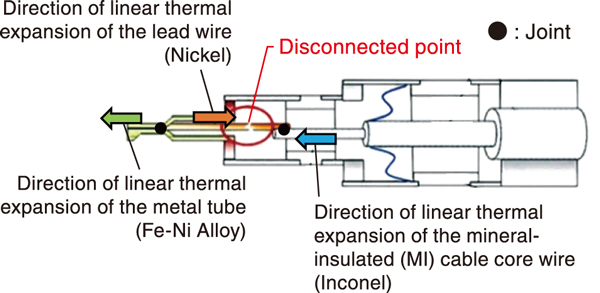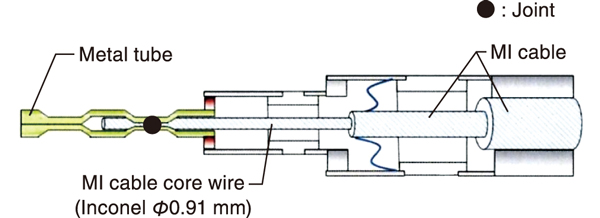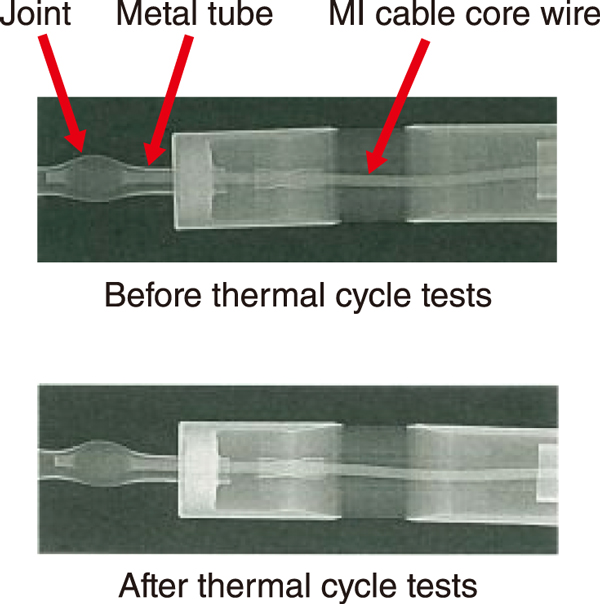
Fig.1 Schematic diagram of the original structure

Fig.2 Schematic diagram of improved structure

Fig.3 Results of thermal cycle tests after structural improvement (X-ray images)
The HTTR (High Temperature engineering Test Reactor) Wide-Range Monitor (WRM) is a fission counter/ionization chamber with heat resistance. It was developed for use under high-temperature environments of the High Temperature Gas-cooled Reactors (HTGRs). At the design stage of the WRM, it was confirmed that measurements could be performed even at 600 ℃ by lifetime evaluation through a high-temperature continuous irradiation test.
However, after reactor operations such as the high-temperature operation test and safety demonstration test, the signal line of the WRM experienced a disconnection, which is attributed mainly to thermal cycling. An examination of the disconnection point revealed that the lead wire inside the WRM was disconnected because of thermal cycling. To avoid these problems, we conducted a study to improve the thermal cycle load near the signal line. In this study, the disconnection mechanism was identified, and measures to improve the strength by changing the structure were determined.
First, the materials of the disconnected parts were investigated to identify the disconnection mechanism. Differences were observed in the thermal expansion coefficients of the lead wire, metal tube, and core wire of the mineral insulated (MI) cable. Specifically, the thermal expansion coefficients of the MI cable core wire (Inconel) and the lead wire (nickel) are equivalent, but the thermal expansion coefficient of the metal tube (Fe-Ni alloy: Ni: 50%, Fe: 50%) is smaller than these values. Therefore, the disconnection was presumed to be caused by the compressive stress generated in the MI cable side because the metal tube could not absorb the thermal expansions of the lead wire and MI cable, and stress was applied to the lead wire (φ0.5 mm), which was thinner than the MI cable core wire (φ0.91 mm) (Fig.1).
In the improvement of the WRM structure, emphasis was placed on the relaxation of stress during thermal expansion and improvement of the structural strength. An improved method that directly joins the MI cable core wire and metal tube without using a lead wire was adopted. Directly joining the core wire of the MI cable to the metal tube helps alleviate the stress concentration; it also improves the strength of the joint because the core wire of the MI cable is thicker and stronger than the lead wire. Furthermore, the risk of disconnection can be reduced by reducing the number of joints where stress acts (Fig.2).
Second, mockup tests, which comprised thermal cycling tests causing disconnection and high-temperature endurance tests to simulate the high-temperature heat resistance of the HTTR, were conducted to verify the applicability of the improved WRM for the HTTR. In both tests, no abnormalities, such as cracks or thinning of the signal line, were observed by continuity resistance and/or X-ray photography, and the improved structure clearly exhibited satisfactory heat-resistance performance (Fig.3).
The improved WRM structure results in a longer life because of the enhanced reliability and contributes to reducing running costs, such as the cost incurred for detector replacement. Furthermore, this achievement will contribute to the development of an HTGR demonstration.
(Takayuki Kozawa)
<Previous: 1 HTGR Hydrogen and Heat Application Research | Next: 1-2>